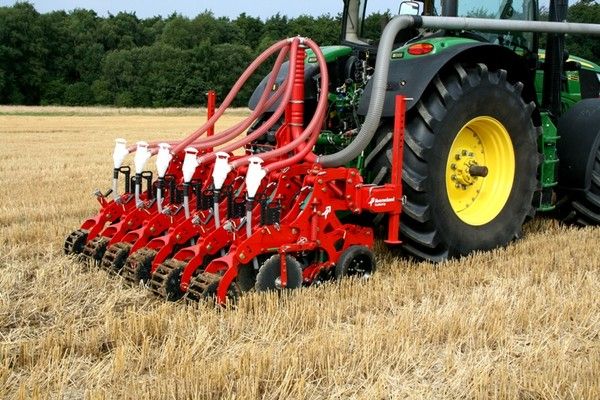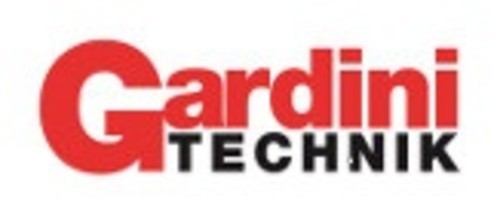
Strip-Tillage: the agronomical benefits of a new tillage technique
In recent years the strip-tillage technique is being developed in Italy and in Europe with interesting results, especially where the soil and climatic conditions make it more difficult to correctly and continuously apply sod seeding
Strip-till (abbreviation of strip-tillage or strip cultivation) allows to concentrate the tillage exclusively on "strips" of land within which the subsequent sowing of the crop will take place while maintaining unaltered surfaces between rows.
The bands of soil, generally tilled at depths ranging between 15 and 25 cm, have a width of 15-20 cm and a space between rows that varies between 40 and 75 cm depending on the needs of the subsequent seeding operation.
With the strip-tillage technique, the soil is tilled over about 30-40% of its surface, while the rest is covered by crop residues of the previous crop.
The current and increasingly important strategy to reduce costs for farms is, in recent years, also involving one of the most important cultivation aspects, namely the tillage of the soil. Tillage has always had the aim of creating a favourable environment, capable of facilitating the success of the crop especially in its early phenological stages. However, if this goal is achieved by streamlining the number of interventions needed, positive agronomic and environmental implications can be achieved together with significant economic benefits.
Besides the possibility of reducing the number of interventions, for example making use of combined equipment, or the intensity by focusing on more superficial tillage, a further potential, which has been developed concretely on the Italian market for only a few years, is to localize a process without inversion of the layers within the area that will later be affected by the depositing of the seed.
From a technical point of view, this solution takes the name of strip-tillage, and it brings together part of the operating principles of reduced soil tillage and sod seeding, leading to a reduction in costs of cultivation as well as a better growing condition from the earliest phenological phases, especially for precision-sown crops.
A compromise between minimum tillage and sod seeding
Strip-tillage began to develop in the 70s in the northern United States, where the problem of "cold soil" in conjunction with the sowing period hampered the productive potential of no-tillage, but at the same time the sod condition, characterized by the constant presence of crop residue on the surface, was a key element from an agronomic and environmental point of view for the containment of erosion.
A first important advantage, which is also reflected in the agricultural realities of northern Italy, is the increase in soil temperature, since the effect of tilling and the displacement of crop residues from the surface of the "strip" allow the soil to warm up more quickly due to the increased exposure to air, thus allowing to bring forward the sowing and especially facilitating the subsequent stages of germination and emergence of the crop.
Facilitating these stages of cultivation is especially well suited to precision sowing crops, where it is necessary to ensure that the number of plants per square metre does not diverge more that of a few percentage points from the number of seeds deposited, since part of these crops (eg. corn, sunflower) are not able to compensate, from a production standpoint, failed areas or inhomogeneous distributions of spaces.
In addition to the thermal aspect, some benefits derived from the adoption of this localized tillage technique also stem from the greater expansion of the root system which, thanks to the possibility of performing a localized distribution of fertilizer in conjunction with the tillage, allows to achieve greater production stability and less sensitivity to water stress.
Without operating over the entire work surface, strip-tillage presents significant operational and economic benefits resulting from the reduction in fuel consumption, increased work capacity and the consequent demand for less powerful tractors. Inspired by the concepts of sod sowing, it also allows for preservation of the inter-crop surface through the important presence of crop residues or cover crops, with positive benefits in agronomic terms.
The strip-tiller
The strip-till technique, for its correct application, requires the use of specific machines, known as strip-tillers, able to perform in a localized manner the first step of cutting and moving the crop residue from the future sowing line, and a subsequent subsurface tillage of the same.
The elements are connected independently to a main frame (fixed or folding hydraulically according to the working width) by means of a parallelogram structure that guarantees a constant adaptation to the profile of the ground, necessary to ensure a perfect horizontality of the machine so that each element is able to operate in optimal conditions.
The preliminary cleaning operation of the land strip is provided by "preparing" elements, already widely used on sod seeders, such as residue cutters and tools able to move the crop residue present on the future seeding line to the inter-row surface (eg. pair of starred disks).
The next tillage phase occurs by means of anchors capable of operating at a depth of 15-30 cm, supported by a pair of deflector discs and by a final roller that settles and refines the tilled area. Conceptually, the main objective of the anchor is to perform a subsurface tillage, but without disturbing too much of the surface, which will instead be worked by the complementary tools mentioned above.
The requirements for quality seeding
The decompaction produced by the strip-tiller facilitates the subsequent work of the planter's plough and helps avoid most of the problems that may occur upon closing the seed furrow, often a major cause of reduced emergence. The better working conditions allow the planter to follow with greater precision of the seeding depth and create an optimal edaphic environment around the seed.
However, to be able to also adapt to non-optimal operating conditions it is important that the planter be able to tackle successfully even the possible presence of crop residue. For this reason, the fitting of residue-parting elements and the presence of a corrugated profile disc to break up possible compacted surfaces is strongly recommended.
Last but not least, the need to carefully consider the type of furrow closing tool and its proper adjustment. These tools are often mistakenly "neglected" by the operators, but play a vital role to ensure adequate and consistent coverage especially on particularly clayey or loamy soils.
An important aid in precision agriculture
The proper adoption of strip-tillage at the enterprise level does not depend solely and exclusively on the technical features of the machines used, but also on the careful planning and execution of individual interventions.
Specifically, this tillage generally takes place at high speed, reaching values close to 7-12 km/h. High speeds and the need to retrace later in time the strip that was tilled while sowing means the strip-tillage technique lends itself well to the adoption of an assisted guidance system.
The need to perform proper seed placement at the centre of the "tilled strip" is a very important aspect that, if not properly ensured, can negatively affect the homogeneity of the emergence and the root development of the plant.








